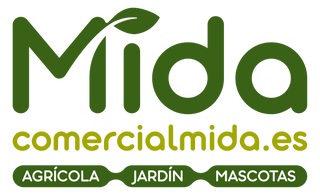It definesseparation anxiety What "a serious behavioral problem exhibited by somedogs when staying home alone orbreak away of one or several of its owners" (simiperrohablara.com)
¿Do you think your dog has separation anxiety??
Experts say that around 40% of dogs suffer fromseparation anxiety. Inpuppy dogs, usually appears due to early separation from the mother (early weaning). Inadult dogs it can be experienced after some traumatic situation in a moment of loneliness.
It may seem like a minor issue, but it really isn't. It is very important that our pet is emotionally stable. In this article we will tell you what the main causes are, how to detect it and how to treat it. separation anxiety.
Separation anxiety is not dependency, the animal simply cannot be in balance during moments of loneliness. The owner provides security, cares for it, protects it. When the owner is not there, and the dog does not know how to deal with loneliness, that is when the symptoms appear.
There are three types ofseparation anxiety:
primary hyperattachment : occurs after early weaning. To prevent this from happening, we must allow weaning to occur naturally. In this way, our puppy will be a self-confident animal.
Secondary hyperattachment: it happens when we spend a lot of time with the animal, and then the situation changes. When the dog is alone he feels afraid, stressed and nervous.
Type-C : occurs after a traumatic situation, but only when the stimulus that provokes it is repeated.
Animals suffering from separation anxiety become alert when they are alone. They cry inconsolably and even destroy objects. To diagnose separation anxiety we must verify that the symptoms occur only in the absence of the owner, even for short periods of absence.
The most common symptoms are the following:
● Damage objects, furniture, etc.
● Crying and howling.
● Make your needs inside the home.
● Vomiting and diarrhea.
There are also rare symptoms:
● not eat
● Do not drink.
● Not playing with their favorite toys.
Once we recognize that our dog has symptoms, we must go to the veterinarian to make sure that the animal does not present any physical alteration. To correct separation anxiety, it is advisable to follow a series of guidelines.
- The main thing is to recognize the cause to try to correct it.
- It is recommended to usebehavior modification techniques. Sure an educator can help you with that.
- It is advisablepay no attention to the dog until he is completely calm, when we return home. Once we leave home, we should never go back in. The new entry will only make the animal's state of stress worse and it will accomplish its goal, which is to get our attention.
- An exercise routine and long game sessions will make the dog more relaxed.
- In order for the animal to adapt to being alone, we can start by making short outings. The duration of the outings should increase, as we see that the animal calms down.
- The use of drugs or synthetic pheromones helps us to make the process faster, since it helps to calm the animal temporarily.
- Diffuser pheromones help create a relaxed environment for our pet, mainly for puppies.
You can find products to calm and reduce the stress of your dogs in our online pet store.

